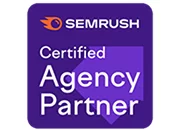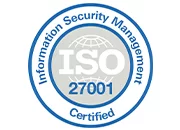Are you tired of one-size-fits-all software that doesn’t quite meet your business needs? If so, you’re not alone. Many small and medium-sized enterprises (SMEs) struggle with generic solutions that fail to address their unique challenges. Enter vertical SaaS—a game-changing approach focusing on niche markets and industry-specific software designed to optimize operations and drive growth. In this blog, we’ll dive into the rise of vertical SaaS and what it means for your business.
Understanding Vertical SaaS
Vertical SaaS, or vertical software as a service, refers to cloud-based solutions specifically designed to cater to the unique needs of particular industries or niches. Unlike traditional SaaS, which aims to provide broad solutions applicable to a wide range of sectors, vertical SaaS hones in on the specific requirements of distinct markets. This specialization allows for more tailored features and functionalities, addressing the unique pain points that businesses in those sectors face.
For instance, a vertical SaaS solution for the healthcare industry may include features like electronic health records (EHR), telemedicine capabilities, and compliance with healthcare regulations. In contrast, a traditional SaaS product might lack these specialized features, resulting in inefficiencies and unmet needs.
The rise of vertical SaaS is attributed to the increasing demand for specialized solutions that enhance operational efficiency, improve customer satisfaction, and drive revenue growth. As SMEs continue to seek competitive advantages in their respective markets, the appeal of vertical SaaS becomes more pronounced.
The Benefits of Niche SaaS Solutions
Niche SaaS solutions offer a multitude of advantages for SMEs looking to streamline their operations and improve their service delivery. Here are some key benefits:
- Tailored Features: Vertical SaaS solutions are built with industry-specific requirements in mind. This means that they often include features that are particularly relevant to the niche, such as compliance tools for finance or inventory management for retail.
- Increased Efficiency: By providing tools that are designed for specific tasks, vertical SaaS can significantly enhance productivity. For example, a construction management SaaS can help project managers track timelines and budgets more effectively than a generic project management tool.
- Improved User Experience: Vertical SaaS solutions are typically easier to use for industry professionals because they align with their workflows. This can lead to higher adoption rates and better overall satisfaction among users.
- Scalability and Flexibility: Many vertical SaaS providers offer scalable solutions that can grow with your business. This is crucial for SMEs that plan to expand their operations over time.
- Cost-Effectiveness: While some may assume that specialized software comes at a premium, niche SaaS can often lead to cost savings in the long run. By reducing the need for extensive training and minimizing operational inefficiencies, SMEs can see a positive return on their investment.
By leveraging the unique advantages of vertical SaaS, SMEs can improve their operational efficiency and customer service, ultimately leading to sustained growth.
Key Industries Adopting Vertical SaaS
Several industries are witnessing a significant shift towards vertical SaaS solutions, each with unique needs that these specialized tools address. Here are some key sectors leading the charge:
- Healthcare: The healthcare sector is increasingly adopting vertical SaaS solutions to manage patient records, billing, and telehealth services. Software tailored for healthcare can help streamline operations and ensure compliance with regulations like HIPAA.
- Finance: In the financial services industry, vertical SaaS tools provide solutions for risk management, compliance, and customer relationship management. These tools are designed to meet the stringent requirements of financial regulations and enhance client interactions.
- Real Estate: Real estate professionals benefit from vertical SaaS solutions that offer property management, customer relationship management, and marketing tools specifically designed for the real estate market. These solutions help agents and brokers manage listings and client interactions more effectively.
- Manufacturing: Vertical SaaS in manufacturing focuses on supply chain management, inventory control, and production planning. By providing tools that cater to the unique needs of manufacturers, these solutions help optimize operations and reduce waste.
- Education: Educational institutions are leveraging vertical SaaS for learning management systems, student information systems, and administrative functions. These tools are designed to improve learning outcomes and streamline administrative processes.
The growing adoption of vertical SaaS across these industries highlights the increasing recognition of the need for specialized software solutions that address specific operational challenges.
Future Trends in Vertical SaaS
As the landscape of vertical SaaS continues to evolve, several trends are emerging that will shape its future:
- AI and Machine Learning Integration: The incorporation of artificial intelligence (AI) and machine learning (ML) into vertical SaaS solutions is on the rise. These technologies can help automate processes, provide predictive analytics, and enhance decision-making capabilities.
- Increased Customization: Future vertical SaaS offerings will likely feature even more customization options, allowing businesses to tailor solutions to their specific workflows and requirements.
- Focus on Data Security: With the growing concern over data privacy and security, vertical SaaS providers will need to prioritize robust security measures to protect sensitive information, especially in industries like healthcare and finance.
- Collaboration Tools: As remote work becomes more prevalent, vertical SaaS solutions will increasingly incorporate collaboration features to facilitate communication and teamwork among industry professionals, regardless of location.
- Subscription-Based Models: The subscription model will continue to dominate, offering SMEs flexible payment options that align with their budget and cash flow considerations. This model allows businesses to scale their software usage according to their growth.
By staying ahead of these trends, SMEs can leverage vertical SaaS solutions to not only meet their current needs but also adapt to future challenges, ensuring their continued success in an ever-evolving market.
Conclusion
In summary, vertical SaaS is revolutionizing how SMEs operate by providing tailored solutions that address specific industry needs. As businesses look to innovate and streamline their processes, turning to vertical SaaS might just be the key. Trust WildnetEdge to help you navigate this landscape with expert guidance and industry knowledge. Don’t miss out on the opportunity to elevate your business!
FAQs
Q1: What is vertical SaaS and how does it differ from traditional SaaS?
Vertical SaaS is software specifically designed for niche markets, focusing on industry-specific needs, unlike traditional SaaS that serves a broad audience.
Q2: Why should SMEs consider niche SaaS solutions?
Niche SaaS solutions offer tailored features, improved user experience, and greater efficiency, making them ideal for the unique challenges faced by SMEs.
Q3: What industries are benefiting from vertical SaaS?
Industries such as healthcare, finance, and real estate are increasingly adopting vertical SaaS to meet specific operational demands and enhance service delivery.
Q4: How can vertical SaaS help my business grow?
By addressing unique industry needs, vertical SaaS can streamline operations, improve customer satisfaction, and ultimately drive growth for your business.
Q5: What should I look for in a vertical SaaS provider?
Look for providers with proven industry expertise, customizable solutions, and robust customer support to ensure your business gets the most value.

Nitin Agarwal is a veteran in custom software development. He is fascinated by how software can turn ideas into real-world solutions. With extensive experience designing scalable and efficient systems, he focuses on creating software that delivers tangible results. Nitin enjoys exploring emerging technologies, taking on challenging projects, and mentoring teams to bring ideas to life. He believes that good software is not just about code; it’s about understanding problems and creating value for users. For him, great software combines thoughtful design, clever engineering, and a clear understanding of the problems it’s meant to solve.
 sales@wildnetedge.com
sales@wildnetedge.com +1 (212) 901 8616
+1 (212) 901 8616 +1 (437) 225-7733
+1 (437) 225-7733































